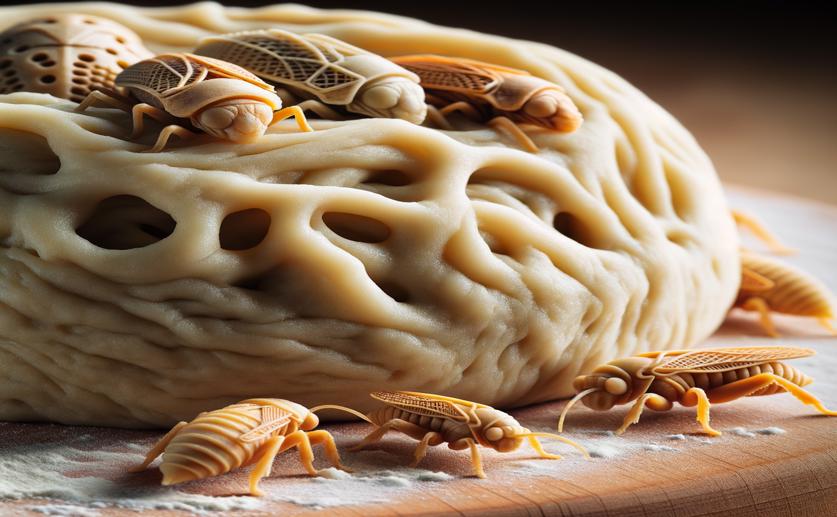
Texture and Quality of Chickpea Dough and 3D-Printed Snacks with Insect Powders
Jim Crocker
23rd May, 2024

Image Source: Natural Science News, 2024
Key Findings
- The study by Universitat Rovira i Virgili explored how adding edible insect powders to dough affects its properties
- Doughs with higher concentrations of insect powders became thicker and more elastic, making them harder to print
- Snacks made with lesser mealworm powder were crispier and had a texture similar to regular snacks
References
Main Study
1) Rheological and Textural Characterisation of Chickpea Dough and Baked 3D-Printed Snacks Enriched with Alphitobius diaperinus and Locusta migratoria Powders
Published 22nd May, 2024
https://doi.org/10.1007/s11947-024-03437-6
Related Studies
2) Cricket-Enriched Oat Biscuit: Technological Analysis and Sensory Evaluation.
3) ATR-FTIR Spectroscopy Combined with Multivariate Analysis Successfully Discriminates Raw Doughs and Baked 3D-Printed Snacks Enriched with Edible Insect Powder.
4) Functional properties of tropical banded cricket (Gryllodes sigillatus) protein hydrolysates.
5) How to Formulate for Structure and Texture via Medium of Additive Manufacturing-A Review.



 17th May, 2024 | Jenn Hoskins
17th May, 2024 | Jenn Hoskins